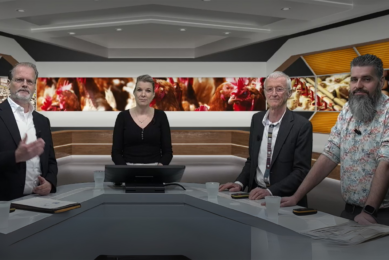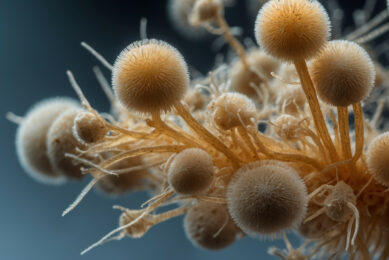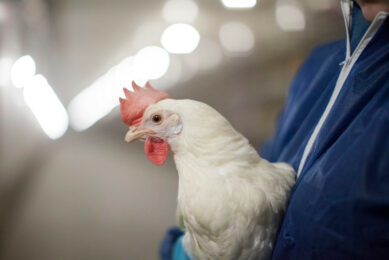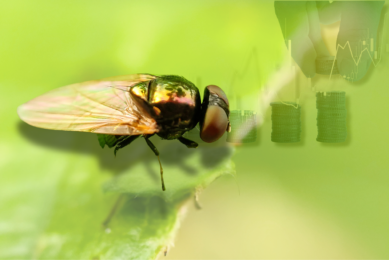Converting poultry by-products into valuable feed ingredients
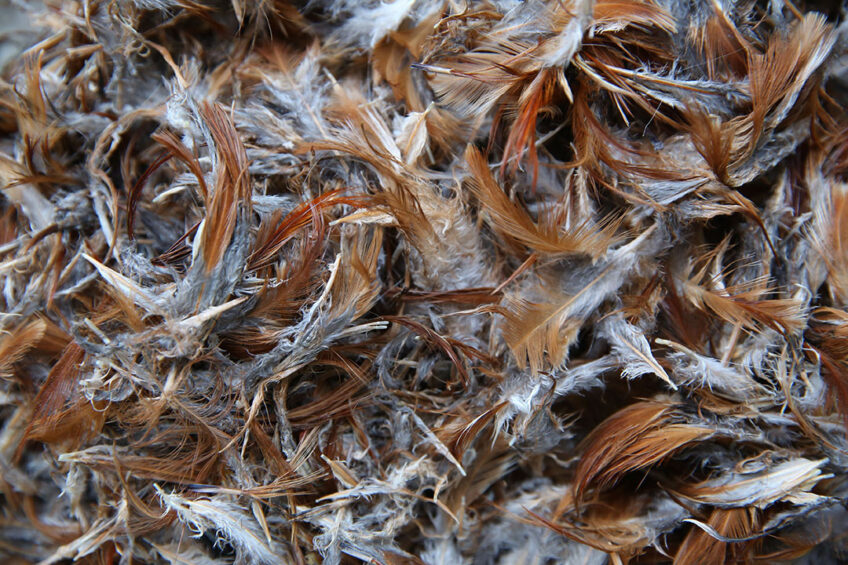
To ensure the sustainable development of the poultry industry, researchers working on a recently published study evaluated how technological progress in poultry waste management is key to attaining economic, environmental and social sustainability.
The poultry industry generates large amounts of byproducts during the processing of meat, mostly in the form of feathers, viscera, bones, heads, legs, skin and dead-on-arrival birds. These materials represent a massive amount of solid waste that should be properly managed to avoid environmental damage and loss of important raw materials that could be used for the feed industry. These byproducts are often rich sources of protein, which, through various technological processes, could be extracted and used as functional ingredients in animal feed.
Technological progress of poultry waste management
With so many useful ingredients and nutrients, poultry waste can be properly recycled, treated and reused as a feed ingredient, among other options. Before poultry waste is recycled and reused, certain pretreatment processes are necessary, and for the animal feed industry, hydrolysis and enzymatic treatment are gaining ground.
In the current study, researchers evaluated these technological processes, focusing on their benefits and limitations and presented the economic, environmental and social sustainability of poultry waste management.
Animal by-product categories
Before considering which pretreatment method to use, processors of by-products establish which category of animal by-products they are going to target. Animal by-products fall into 3 categories.
Whichever category is used, the safety of the by-products is very important. In a conversation with Noblesse, a producer of poultry proteins and fats from category 3 slaughterhouse by-products emphasised the importance of registering with safety control organisations, as they are registered with the Netherlands Food and Consumer Product Safety Authority (NVWA), which monitors animal and plant health, animal welfare, and the safety of food and consumer products.
 Hydrolysis
Hydrolysis
Hydrolysis is the process of breaking the peptide bonds of animal carcasses and waste by putting them in a special solution under high temperature and pressure to denature proteins into amino acids, hydrolyse fats, and dissolve carbohydrates. With hydrolysis, poultry waste can be used to produce value-added products, including high-quality protein and bioactive ingredients for the food and feed industry, bringing additional economic benefits and helping mitigate the negative effects of poultry waste disposal on the environment.
Benefits & limitations
Recent studies show that, following processing, poultry secondary products such as keratin and collagen can be used to produce protein feed additives that improve broiler productivity and meat quality. Hydrolysis has the advantage that it is carried out under optimal conditions, has minimal interaction between steps and can be applied to a wide range of by-products. However, the technique involves high costs and takes longer, which can increase the susceptibility to contamination.
 Enzymatic treatment
Enzymatic treatment
The conversion of poultry offal and feathers into value-added materials and products requires protein recovery, which is a major challenge.
By using enzymes for bioconversion, this protein recovery process can be achieved. Bacillus spp. seems to represent a major source of keratinolytic enzymes for feather processing. Keratinase enzyme, which can be obtained from micro-organisms, is a common enzyme that is used to process feather waste to produce feed hydrolysates and bioactive peptides with good nutritional characteristics. Studies also show that in addition to being used to produce animal feed, by-products generated from enzyme-digested poultry waste can be used to make high-quality meals for aquaculture. Several studies point out that feather degradation mediated by keratinase provides a viable alternative to alkali hydrolysis and steam pressure-cooking of feathers resulting in products of better nutritional properties which can be used as animal feed.
Overall, enzymatic treatment is eco-friendly, has a low energy demand as it uses low temperatures and pressure, has a short processing duration, has high conversion efficiency, and involves low waste generation. However, according to the researchers, improvements should focus on reducing the high enzyme costs, improving enzymatic activity or performance and enzyme recycling.
Economic, environmental and social sustainability
In a recent study published in World’s Poultry Science Journal, scientists confirmed that poultry by-product meal obtained by rendering had very high protein (63.7%) and fat (24.5%) contents and could be a cost-effective feed ingredient for monogastric animals that would also ensure efficient production.
Black soldier fly (BSF) bioconversion of waste, including poultry waste (depending on substrate regulations), has led to an improvement in the economics of BSF-based animal feed production.
Substrates such as animal manure, food wastes, and sewage sludge have negative values as the generators of such wastes must pay discharge fees.
In a recent study published in the Waste Management journal, researchers highlighted the fact that substantial economic benefits of BSF-based animal feed production are likely to come from the use of negative value wastes, proper process control, scaling up of production systems, coupled with incentive-based government policies. BSF meal is rich in lauric acid, chitin and antimicrobial peptides, which are reported to have antimicrobial and prebiotic attributes. The researchers suggested that if BSF meal could be substituted for the use of antibiotics, prebiotics or conventional feedstuffs successfully, this would greatly improve the economics of BSF meal as livestock and aquaculture feed.
Disposal of poultry waste
On the other hand, the negative effects of improper disposal of poultry waste on the environment include the release of ammonia and nitrous oxide, the emission of greenhouse gases, and contamination of groundwater and surface water by nitrates, phosphates and pathogens.
Work published in the Journal of Cleaner Production showed that using poultry slaughterhouse waste in ruminant nutrition as a cleaner product for animal feeding greatly improves environmental sustainability.
BSF: Potential to significantly reduce footprint
Similarly, a recent study published in the Journal of Environment, Development and Sustainability (2024) shows that BSF-based products not only provide a sustainable and eco-friendly source of nutrition but also have the potential to significantly reduce the environmental footprint associated with traditional livestock farming.
Multifaceted benefits
Studies show that the social benefits of using poultry waste can be multifaceted, including the reduction of zoonotic infectious diseases, the improvement of air quality, and the creation of more job opportunities.
Challenge of high costs
Drawing from their study, researchers see technological progress in the treatment of animal by-products as an effective and efficient way of contributing to a circular economy for sustainable poultry production. They conclude that we should consider the pros and cons for better use, advancement or invention of new processes. However, the researchers also observed that most techniques involving the conversion of animal waste by-products into value-added products face the challenge of high costs that could hamper efforts to upscale production.




